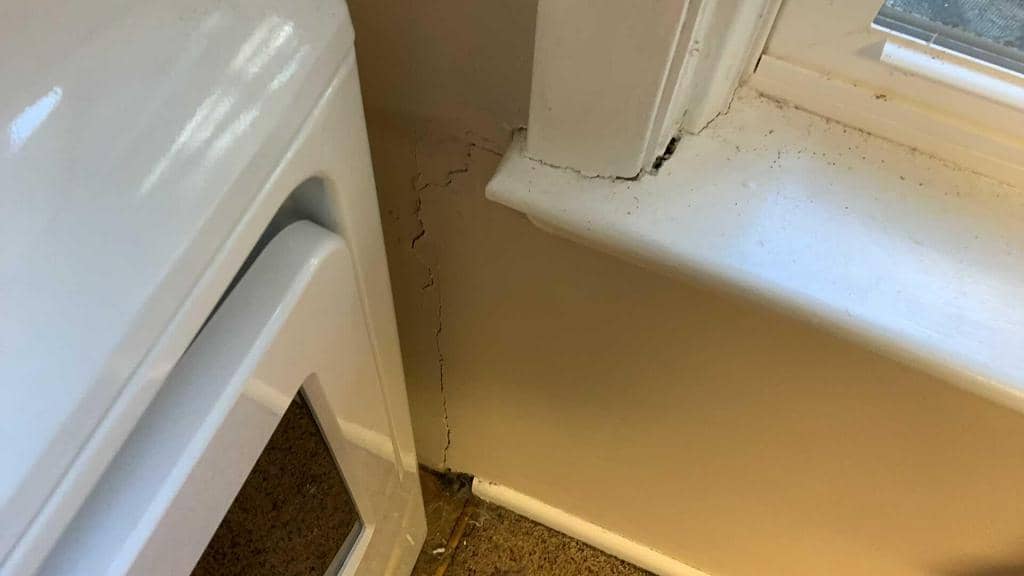Getting The Best Basement Waterproofing To Work
Getting The Best Basement Waterproofing To Work
Blog Article
The Basic Principles Of Best Basement Waterproofing
Table of ContentsThe Ultimate Guide To Best Basement WaterproofingRumored Buzz on Best Basement WaterproofingFacts About Best Basement Waterproofing UncoveredThe 10-Second Trick For Best Basement WaterproofingBest Basement Waterproofing Can Be Fun For Everyone
AdvantaClean's experienced specialists and specialists will certainly find the water resource. If wall surface or slab splits are present, we will inject polyurethane and epoxies into the cracks and seal the concession, avoiding more wetness from going into.
If there's condensation on the outside of the foil, you have high humidity in your cellar. Repair it with a portable space dehumidifier or a whole-house humidifier system as opposed to waterproofing products. If the foil has condensation on the within surface (following to the wall surface), the soil around your house might be normally damp from a high water table or bad dirt drain.
You can waterproof simply your interior wall surfaces, which might address the problem. Or you can waterproof your outside wall surfaces, which is a far better bet however even more costly. Here's the inside story on the various types: These thick layers are cement-like. Once they dry, they stick completely to concrete and masonry walls (Best Basement Waterproofing).
9 Simple Techniques For Best Basement Waterproofing
Concrete water-proof coverings can't be applied to previously repainted surfaces; inspect the tag. Recognized as densifiers, they are appropriate only for walls that have not been painted or sealed.
But you comb, roll, or spray it on a lot more heavily one gallon covers just 75 square feet, not the 300 square feet common with standard paint. Waterproof paint is fine for DIY application. You can apply it over painted surface areas, and paint over it once it's cured (one gallon prices $37).
It can set you back $10,000 to $15,000, depending on the job needed. Outside waterproofing entails excavating throughout the home fully depth of the foundation wall surfaces, then installing a waterproof finish or membrane layer covered by water drainage panels. The panels give a simple path for water to flow to an exterior French drain at the end of your structure.
A basement without waterproofing is kind of like that. Your basement doesn't desire to go via a rainstorm without correct defense just as much as you do not want to.
The Definitive Guide for Best Basement Waterproofing
If you've done your research, you would certainly know there are 2 kinds of waterproofing: inside and exterior. It can get puzzling what they both mean, which one's a much better investment, and what will really keep the water out. Don't worry, we assembled this blog to quickly specify both approaches for you and talk about the advantages and disadvantages of each.
Exterior waterproofing is a waterproofing method that includes securing your home from the outside. It's kind of like a moat around a castle. It entails excavating a trench around your entire house to the structure (concerning 8 to 10 feet down). The foundation wall surfaces are after that cleansed, secured, and covered with a water resistant membrane layer or sealant.
What Does Best Basement Waterproofing Mean?
It's an extra engaged process that needs excavating up your yard, which is pricey and time-consuming. Outside waterproofing involves removing everything bordering your house, including verandas, driveways, website here pathways, landscaping, air conditioner units, decks, and so forth. If any one of the job was done improperly and water find is still entering your basement, there isn't much you can do to fix or repair it.
Inside basement waterproofing involves waterproofing from the within. Any kind of water that leakages right into your basement is redirected prior to it touches your floor.
It's an efficient approach to water-proof your cellar - Best Basement Waterproofing. The disadvantage of indoor basement waterproofing mainly concerns the setup process. This approach requires saved items, furnishings, and integrated shelving or closets to be relocated from touching the basement walls. And during installment, your basement can't be used. The biggest difference in between the 2 methods is this: Exterior waterproofing is a preventative option and interior waterproofing is a restorative solution.
The smart Trick of Best Basement Waterproofing That Nobody is Talking About
Finally, outside and interior cellar waterproofing are both effective approaches of safeguarding your home from water damages. Outside waterproofing creates an obstacle that stops water from pop over to this web-site entering your home, while indoor waterproofing redirects water that does enter your home. And it is necessary to keep in mind that exterior waterproofing is a pricey and disruptive setup process when contrasted to indoor waterproofing.
Whichever approach you pick, make sure you select a trustworthy and reliable service provider for the task. If you have any kind of inquiries concerning cellar waterproofing, please get to out to us.
You can submit our form here, begin a conversation in the lower right-hand edge, or call us at 1-800-827-0702.
Report this page